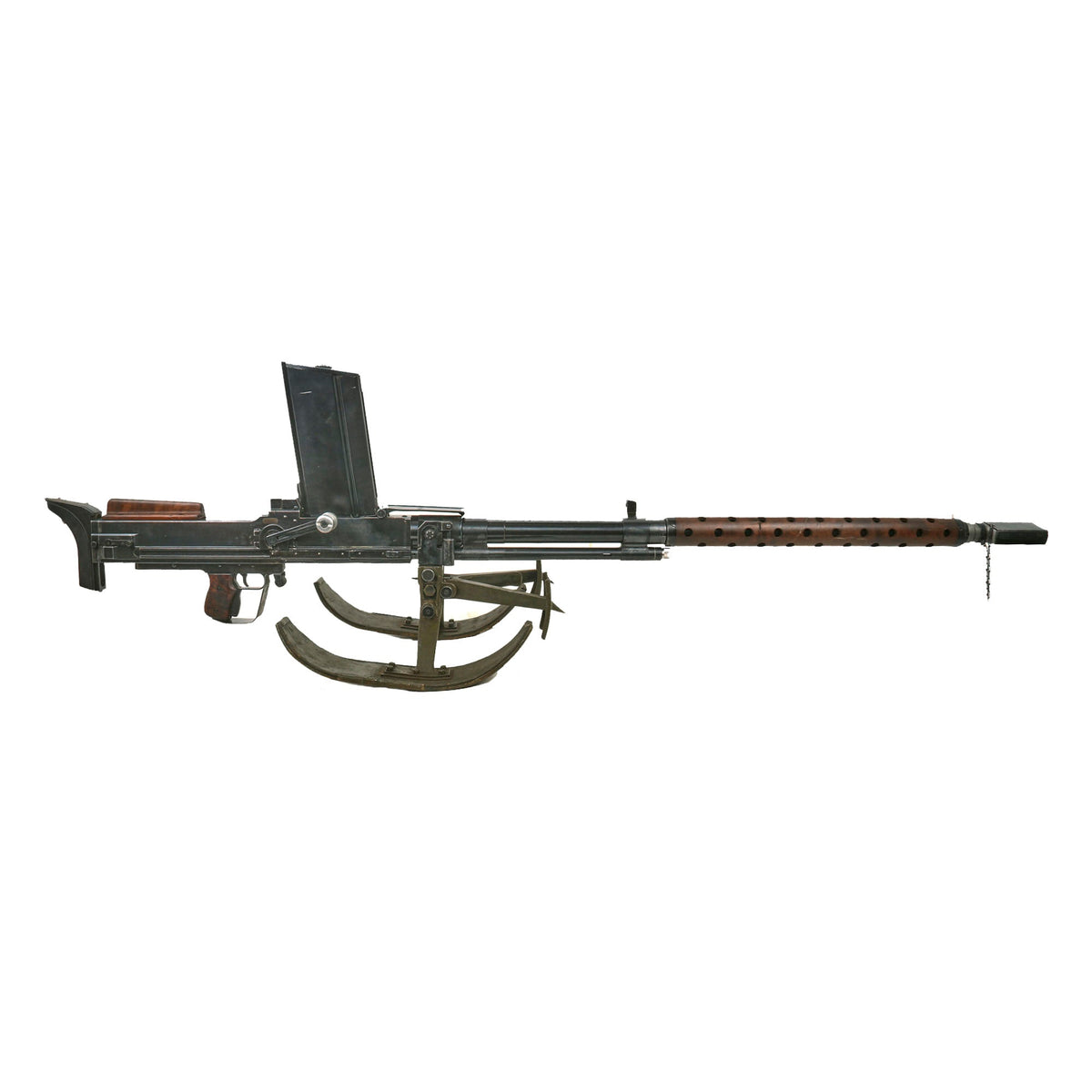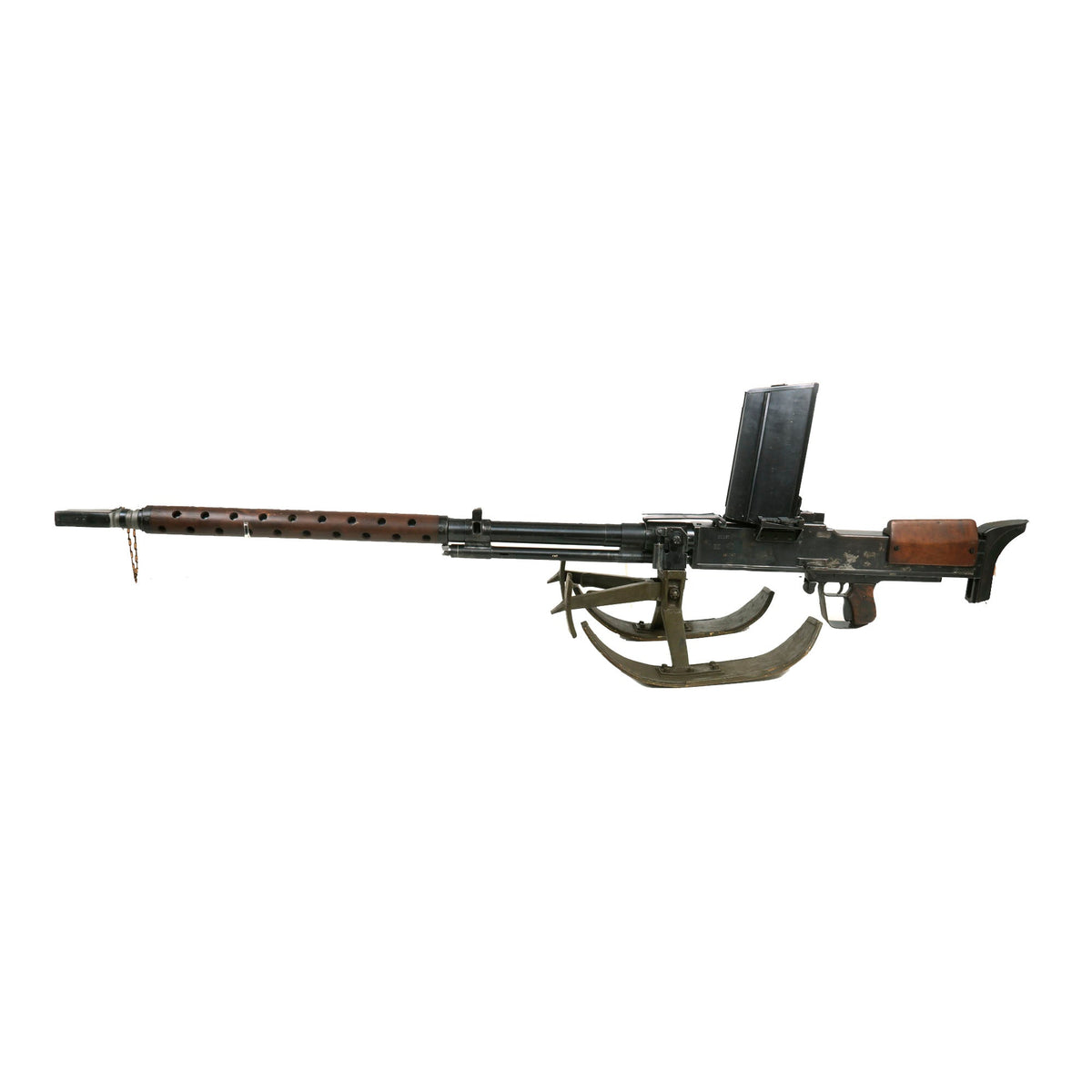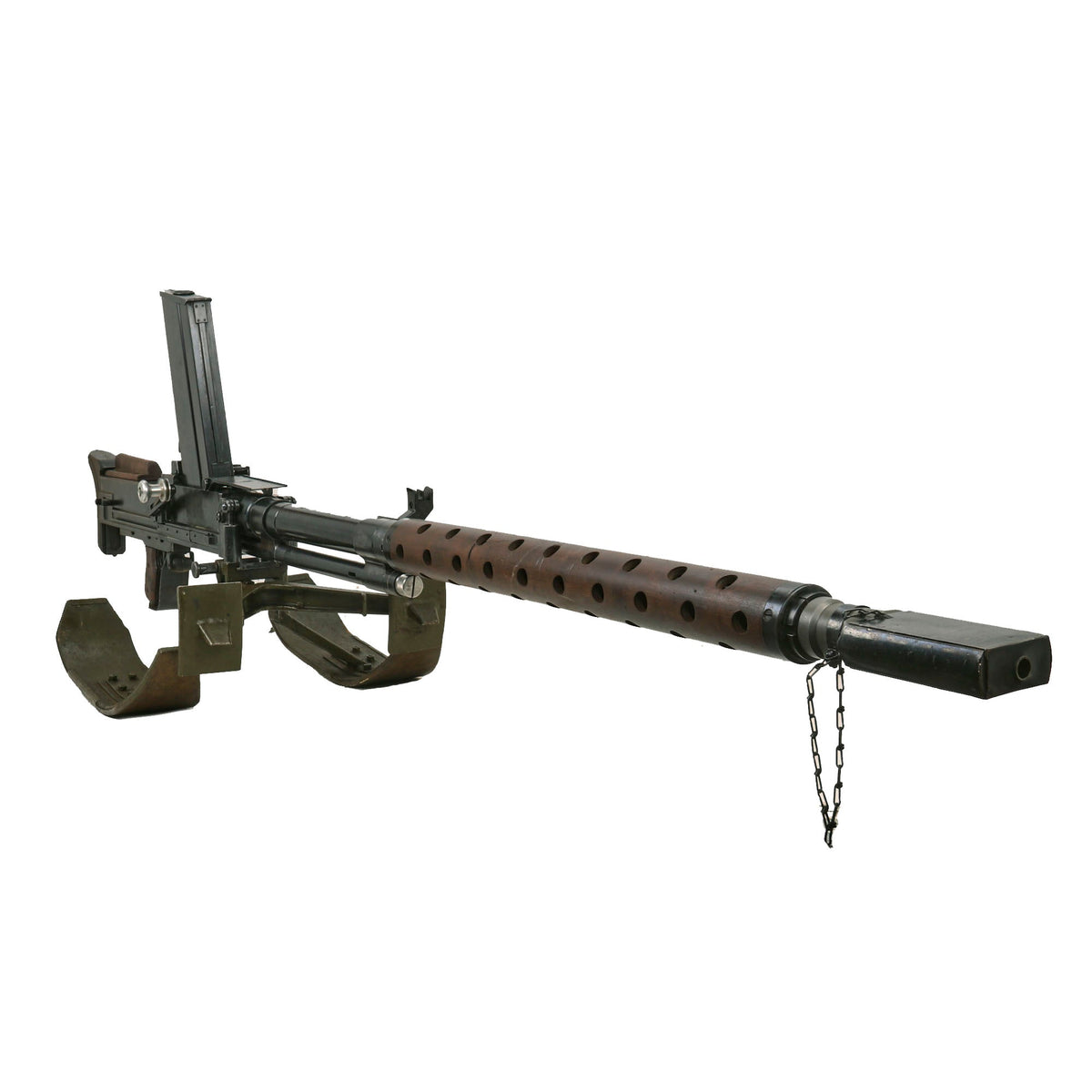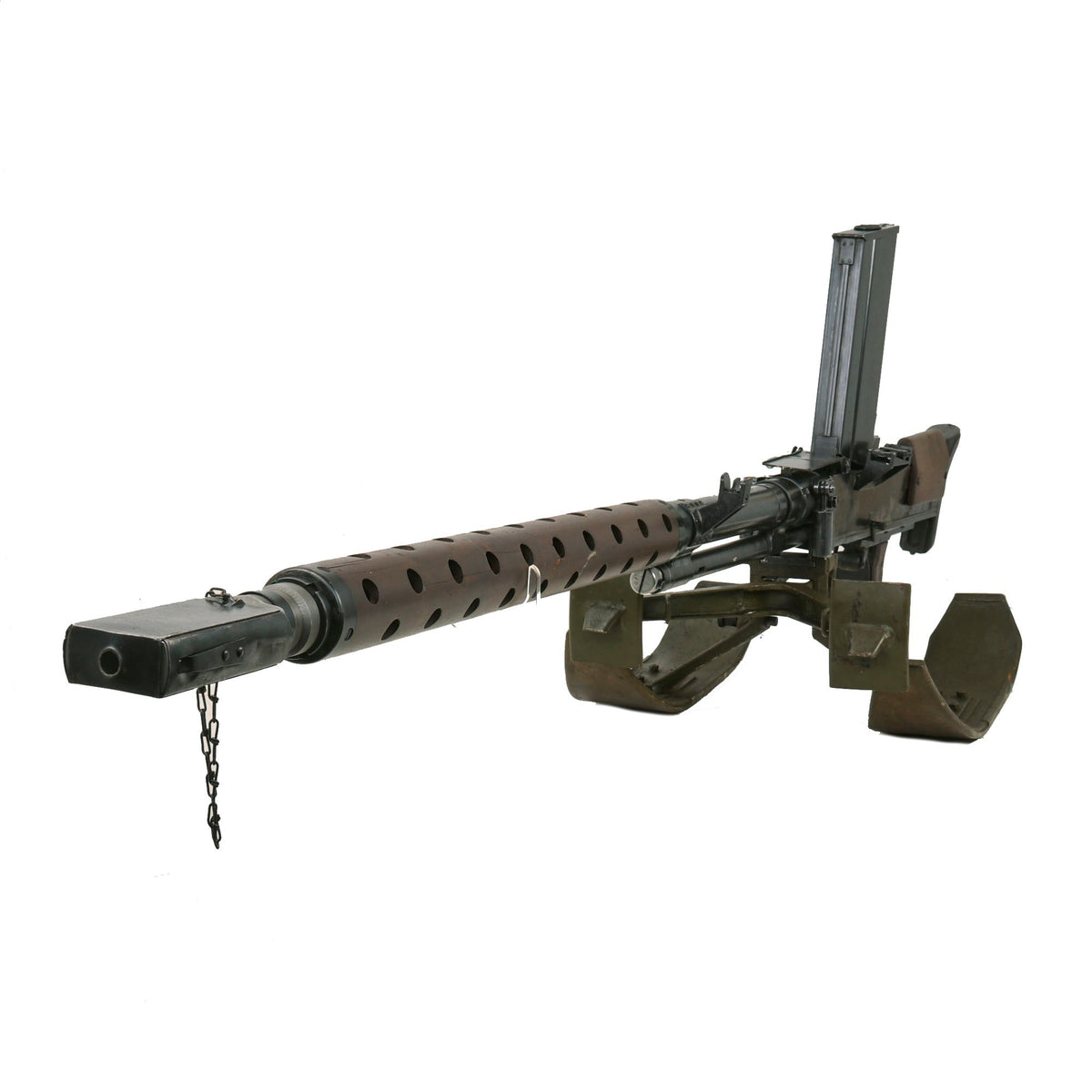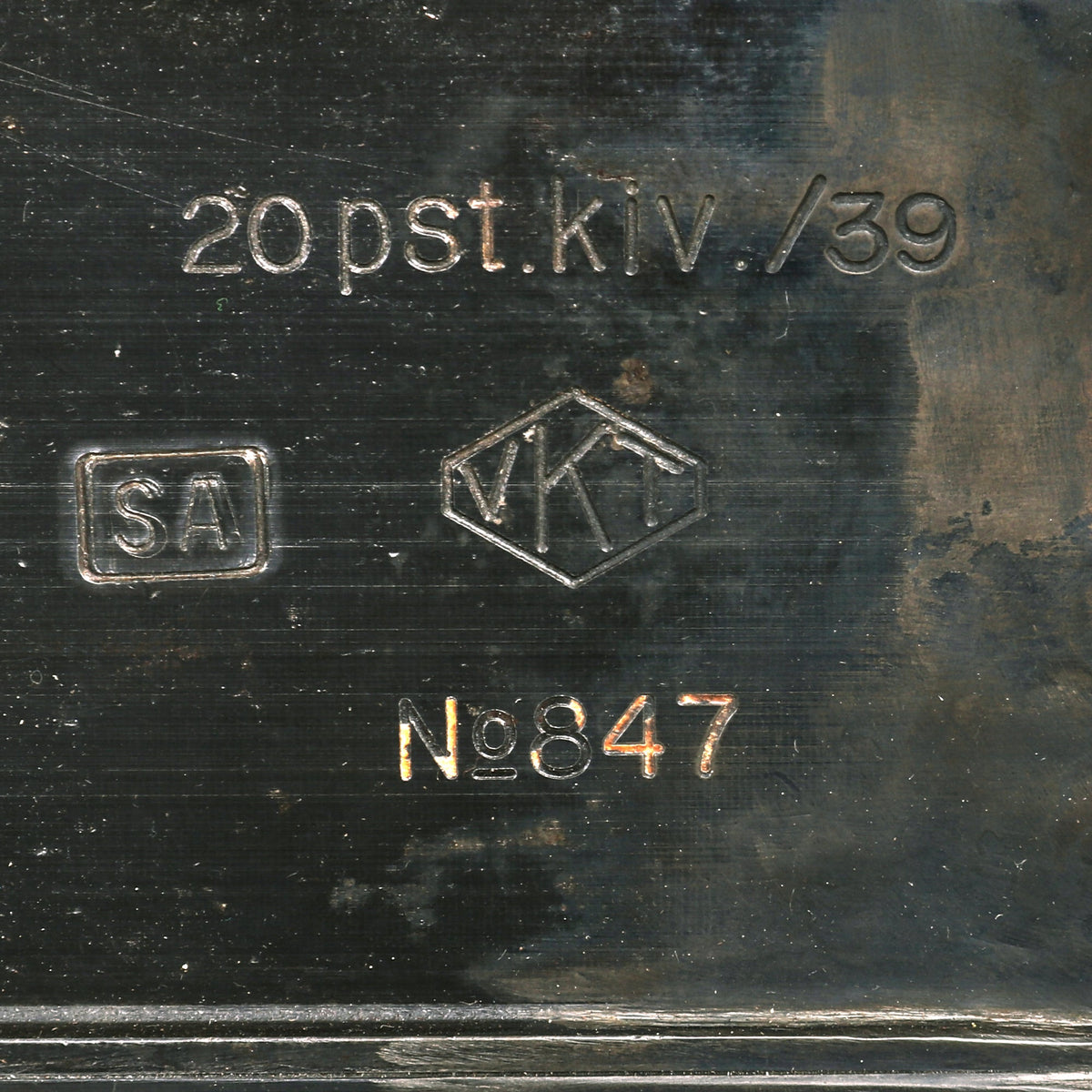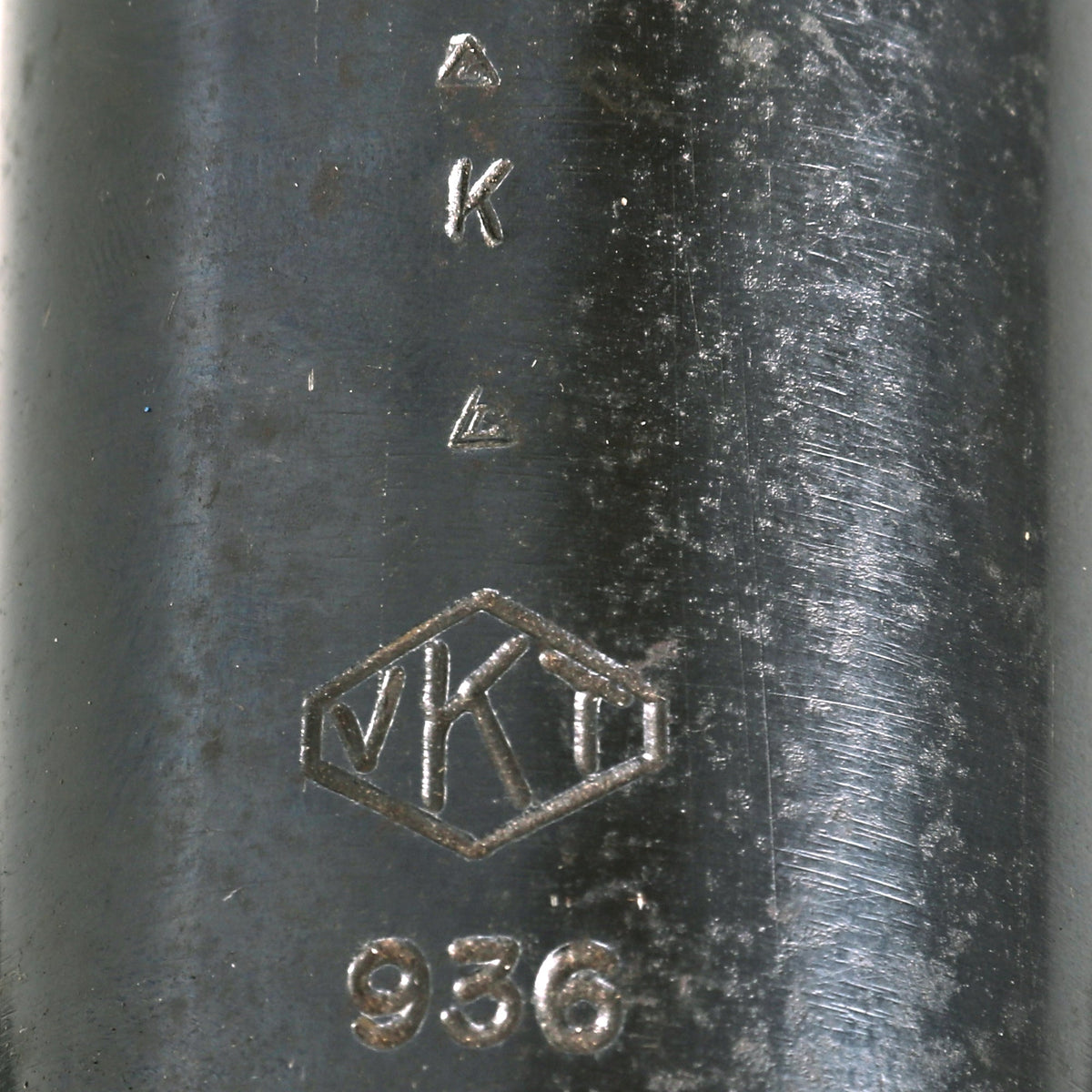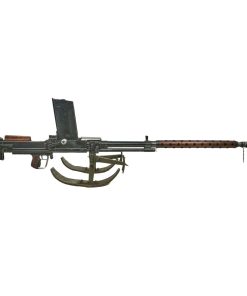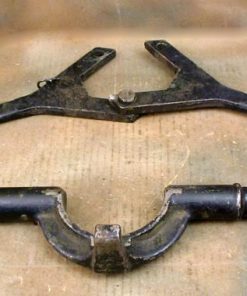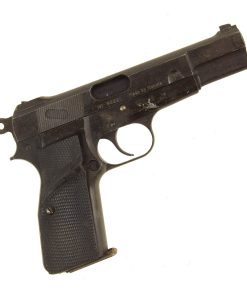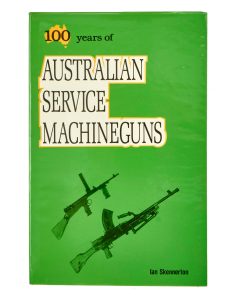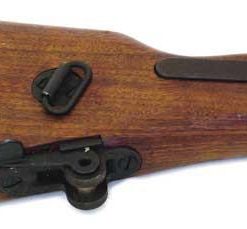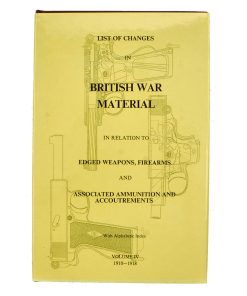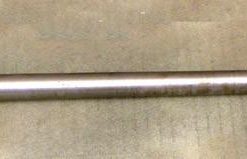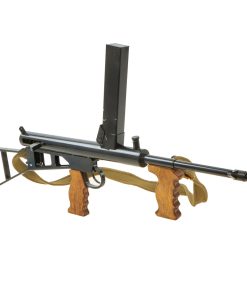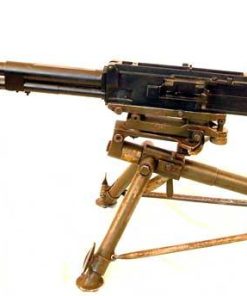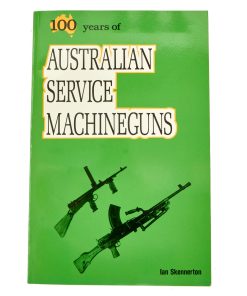Original Finnish WWII Lahti L-39 Display Anti-Tank Rifle Serial 847 by VKT with Sled Bipod, Muzzle Cover & Display Magazine Original Items
$ 6.995,00 $ 1.748,75
Original Item: Only One Available. This is truly an impressive non-firing inert display piece, the likes of which we have only had one of before! Constructed from a legally demilitarized (de-milled) parts set, this is a fantastic and extremely rare Finnish WWII Lahti L-39 Display Anti Tank Rifle. It is built from all original parts on an original BATF compliant non-firing display receiver, making this a 100% legal display gun. This receiver was created by using portions of the original torch cut receiver, including the barrel bushing, and has had 4 inches completely removed, and the deactivated internals inserted and welded in place into the interior. The receiver can no longer fit a magazine as it is 4 inches shorter than a typical Lahti L-39 receiver. With no ability to function and being rendered totally inert, it is totally legal to own without a license of any kind.
This massive display Lahti L-39 Anti-Tank rifle measures an impressive 86 inches in overall length with the muzzle brake and shoulder pad installed, and truly looks the business on top of the sled bipod, which could quickly be converted from transport mode on the skiis to the higher bipod for firing. The left side of the display receiver still bears the original manufacturer markings:
20 pst. kiv. / 39
<VKT>
No 847
This is short for 20mm panssarintorjunta kivääri / 39, or “20mm Anti-tank Rifle / 39”. As with all L-39s, it was manufactured by VKT, or Valtion Kivääritehdas (lit. State Rifle Factory), the Finnish State Arsenal located in Jyväskylä. Serial number 847 is also marked on several other components, including the receiver end cap / recoil buffer, and the gas piston. As with many we see however, other components were swapped during service. The barrel is marked with serial number 936 and the trigger group is marked 2353.
On this example, the dust cover for the magazine well was shortened as well, so it can still be fastened closed. Additional, we have modified the magazine from a Hotchkiss 13.2mm anti-aircraft gun to fit the new shorter magazine well. It has no internals, and is a bit of a tight fit, but it does stay in place for display. The included metal muzzle cover fits the muzzle brake perfectly, though it does appear to have the retention spring broken off, so it can slide off at times.
The display rifle is in very good condition. with original markings and finish very well retained. It still has the original adjustable shoulder pad, as well as the wooden ventilated barrel jacket around the front of the barrel, which made transport when the barrel was hot much easier. The original sled bipod works great, and can be removed from the rifle easily. One 20mm dummy round is included, though we do not believe that they are the correct caliber rounds to go with the display gun.
This is truly a fantastic display piece, and we are unlikely to see another like it anytime soon. Ready to add to your collection and display!
The Lahti L-39 wass a Finnish 20 mm anti-tank rifle used during the Second World War. It had excellent accuracy, penetration and range, but its size made transportation difficult. It was nicknamed “Norsupyssy” (“Elephant Gun”), and as tanks developed armor too thick for the Lahti to penetrate, its uses switched to long range sniping, tank harassment and with the L-39/44 fully automatic variant, employment as an improvised anti-aircraft weapon.
Design:
Finnish weapons designer Aimo Lahti had doubts about the original idea of a 13 mm anti-tank machine gun and started working on a 20 mm design. Officers who wanted smaller caliber anti-tank weapons believed that the muzzle velocities of 20 mm shells were insufficient to penetrate armor, and a weapon with a higher rate of fire and in a smaller caliber would prove useful. As a result, Lahti designed two competing anti-tank weapons: a 13.2 mm machine gun and a 20 mm rifle. After test firing both weapons in 1939, they found that the 20 mm rifle achieved better penetration.
Operation:
The rifle is a semi-automatic, gas operated weapon with the piston located beneath the barrel and ammunition feed from a detachable top-mounted magazine with bottom ejection for the spent cartridges. To reduce recoil, the rifle is equipped with a five-hole muzzle brake and a padded leather recoil pad. The barrel has a wooden jacket to allow for transportation after firing has caused the barrel to heat up.
Winter War
During the Winter War (1939–1940) Finland lacked anti-tank weaponry. Only two 20 mm rifles and a few 13.2 mm machine guns made it to the front, where the 13.2 mm machine guns were found to be ineffective and unreliable while the larger 20 mm rifles proved successful against Soviet armor. Because of this, Finland finally settled on the 20 mm design and started production. The gun was also widely used in the “Cold Charlie” counter-sniper technique, where the Finns would use mannequins posing as sloppily-covered officers. Soviet snipers would fire upon the mannequins, and the Finns would then return fire at the Soviet snipers with Lahti L-39s.
Continuation War
The Continuation War (Finnish: jatkosota, Swedish: fortsättningskriget, 25 June 1941 – 19 September 1944) was the second of two wars fought between Finland and the Soviet Union during World War II.
Although the weapon was not able to penetrate newer Soviet tanks like the T-34 and KV-1, it still proved to be quite effective against bunker loopholes and embrasures, long range targets, and even aircraft. A fully automatic version of the L39 was made in small numbers that served as an anti-aircraft gun. Other good targets were snipers, and several weak spots on tanks, such as open top hatches, especially with phosphorus ammunition. It was even able to damage tank turrets and pin them to stop traversal of the cannons.
Around December 1940, a Lahti L-39 replaced the original 13.2 mm L-35/36 machine gun on the Finnish L-182 armored car. This conversion was employed by the armored unit of 1. Divisioona (English: 1st Division) during 1941.
Details
Users found the L-39 to be heavy and difficult to move in the battlefield. Even its magazine weighs almost two kilograms. The magazines have a covered viewing slit on the right side to indicate the number of rounds left in the magazine, and a 15-round magazine was later developed for anti-aircraft use.
To combat the L-39’s immense recoil, the recoil spring is so stiff that it would be impossible to cock the weapon with a traditional charging handle. Instead, a rotating crank lever on the right side of the gun, operating a rack and pinion, is used to pull the bolt back. While semi-automatic in function, the L-39’s bolt locks back after every shot, and the grip safety also functions to release the bolt. The entire front of the grip and trigger is protected by a large guard and a rubber buffer to protect the operator’s hands from the spent casings which eject from the bottom of the gun at very high speeds.
The whole weapon weighs some 50 kilograms and it was usually towed by horses, but when stripped down could be carried by several men. The rifle has adjustable iron sights calibrated between 200 and 1,400 meters and was equipped with an unusual “dual” bipod, with two sets of legs, one with spikes for use on hard ground and the other with skids for use on softer ground or snow.
In the field, a two-man team was assigned to the gun to move and fire it. Some rifles were abandoned in the heat of battle, but they were easy to replace. By the end of the war over 1,900 L39s had been manufactured by VKT (Valtion Kivääritehdas, “State Rifle Factory”, modern day Patria) and put in the field.
Fast Shipping with Professional Packaging
Thanks to our longstanding association with UPS FedEx DHL, and other major international carriers, we are able to provide a range of shipping options. Our warehouse staff is expertly trained and will wrap your products according to our exact and precise specifications. Prior to shipping, your goods will be thoroughly examined and securely secured. We ship to thousands clients each day across multiple countries. This shows how we're dedicated to be the largest retailer on the internet. Warehouses and distribution centres can be located throughout Europe as well as the USA.
Note: Orders with more than one item will be assigned a processing date depending on the item.
Before shipping before shipping, we'll conduct a thorough inspection of the items you have ordered. Today, the majority of orders will be delivered within 48 hours. The delivery time will be between 3-7 days.
Returns
The stock is dynamic and we cannot completely manage it because multiple stakeholders are involved, including our factory and warehouse. So the actual stock may alter at any time. It's possible that you may not receive your order once the order has been made.
Our policy is valid for a period of 30 days. If you don't receive the product within 30 days, we are not able to issue a refund or an exchange.
You can only return an item if it is unused and in the same state as the day you received it. You must have the item in its original packaging.
Related products
Uncategorized
Uncategorized
Australian WWII Owen MK1 Machine Carbine SMG Custom Fabricated Replica with Sling Original Items
Uncategorized
Uncategorized
Uncategorized
Angolan Rebel 1970s era 60mm Inert Display Mortar from Angolan Civil War Original Items
Uncategorized
Uncategorized
Uncategorized
Uncategorized
Uncategorized
Uncategorized
Australian WWII Owen MK1 Machine Carbine SMG Custom Fabricated Replica with Sling Original Items
Uncategorized
Uncategorized
Uncategorized
